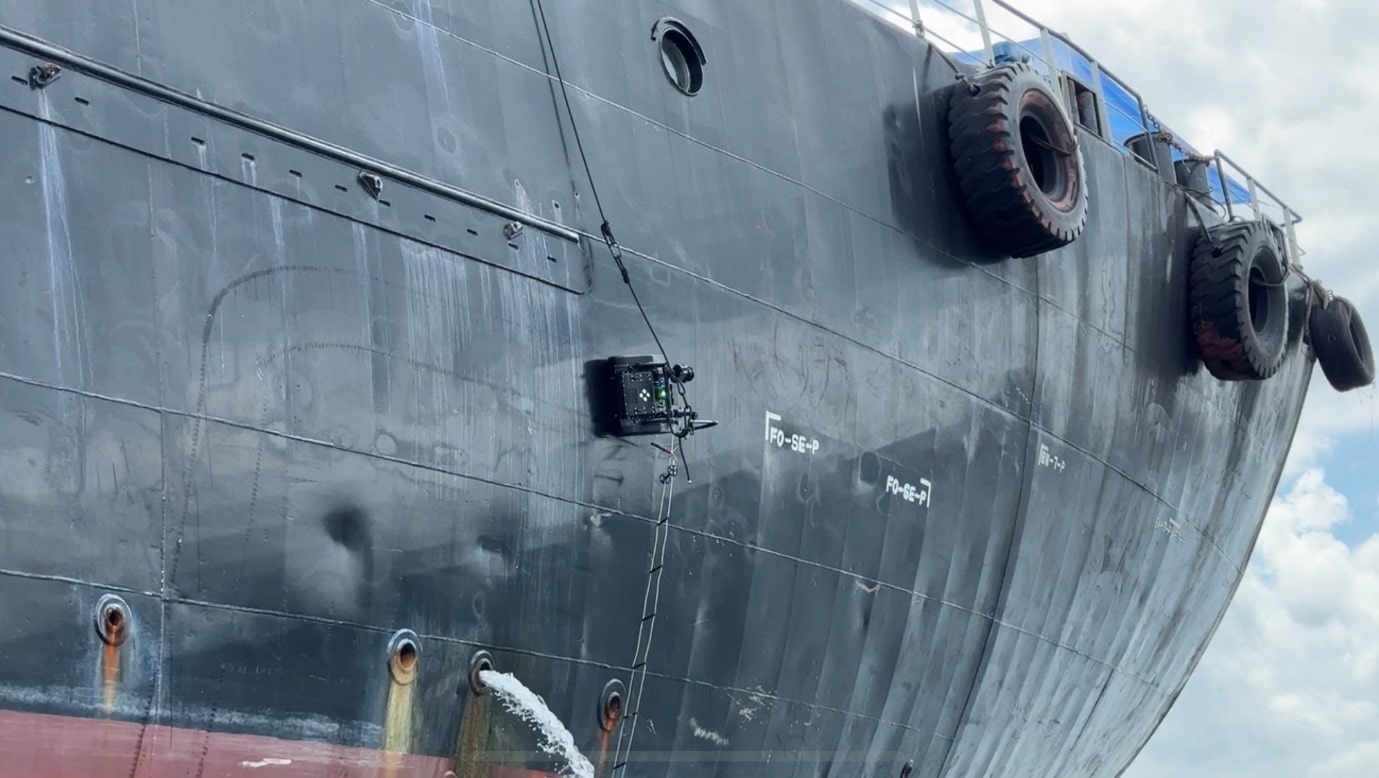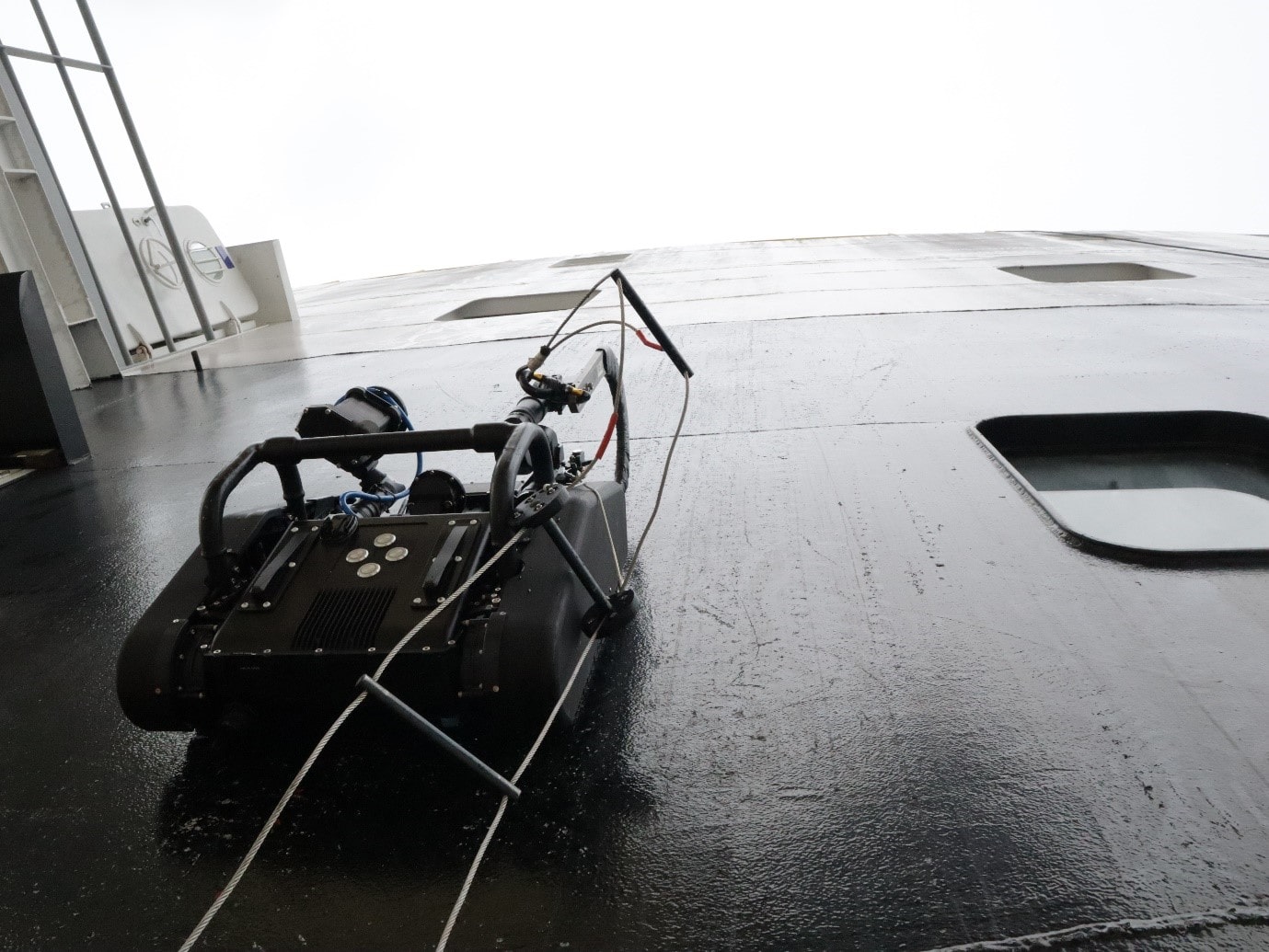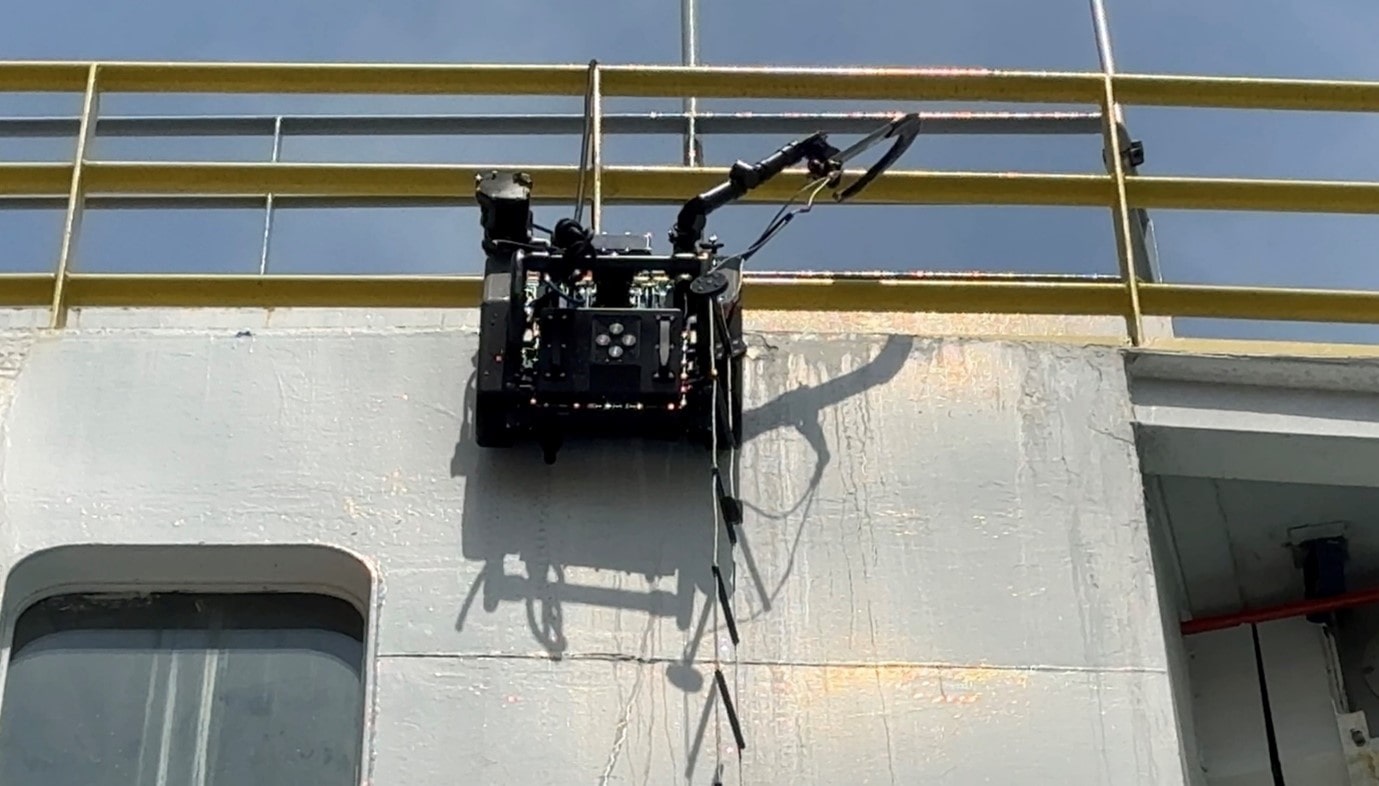 Meet SPYDER, the Hull Climbing Robot! (Photo: HTX)
Meet SPYDER, the Hull Climbing Robot! (Photo: HTX)
Popular video games like “Sea of Thieves” or “Assassin’s Creed: Odyssey” make naval warfare look like child’s play. Boarding an enemy’s ship in these games often has players take an extremely long jump onto the enemy ship or seamlessly rappel through the air and land on the ship’s deck—all with the press of a single button.
In reality, ship boarding operations are no game. When Home Team officers need to forcibly board ships to protect Singapore, it is not as easy as blindly throwing a grappling hook and swinging onto the platform Rambo style. Rather, to board enemy vessels, Home Team officers have to secure a ladder to the side of the ship and use it to climb onboard.
Enter SPYDER – the Hull Climbing Robot, which is conceptualised by the Robotics, Automation & Unmanned Systems Centre of Expertise (RAUS CoE) and the Police Coast Guard (PCG) while being materialised by ST Engineering. SPYDER aims to augment ship boarding operations by providing an alternative method for ladder deployment and is the first-of-its kind vertical climbing robot custom-built for the Home Team.
Making the climb
 SPYDER making the arduous climb up a ship's hull. (Photo: HTX)
SPYDER making the arduous climb up a ship's hull. (Photo: HTX)
You might be wondering how a robot can climb up a ship. While the steel structure of a ship’s hull might look slippery or smooth to us, it is actually what helps SPYDER climb up in the first place. Steel is known as a ferromagnetic structure, a material which magnets can adhere to. This allows SPYDER to use its magnetic tracks to “stick” onto and climb up the hull! SPYDER also comes with edge-detection capabilities to warn operators of when the surface ahead is non-metallic, ensuring that it safely makes its way up the hull.
 SPYDER deploys its robotic arm to secure a titanium hook. (Photo: HTX)
SPYDER deploys its robotic arm to secure a titanium hook. (Photo: HTX)
But of course, climbing is not all it does. SPYDER brings with it crucial operational equipment that is manoeuvred into position and deployed by its robotic arm. In the case of ship boarding, SPYDER uses its arm to secure a titanium hook to the hull before deploying the ladder that Home Team officers use to board the ship.
Extra eyes on board
Other than augmenting the ship boarding process, SPYDER also enhances operational safety by using its onboard cameras for near-field surveillance, allowing for real-time situational awareness. For example, Home Team officers can monitor the adequacy of the hook’s engagement and deployment in real-time, preventing any accidents that may occur due to the hook dislodging.
SPYDER was recently showcased at the Milipol Asia-Pacific – TechX Summit exhibition held at the Marina Bay Sands convention centre from 3-5 April 2024.

